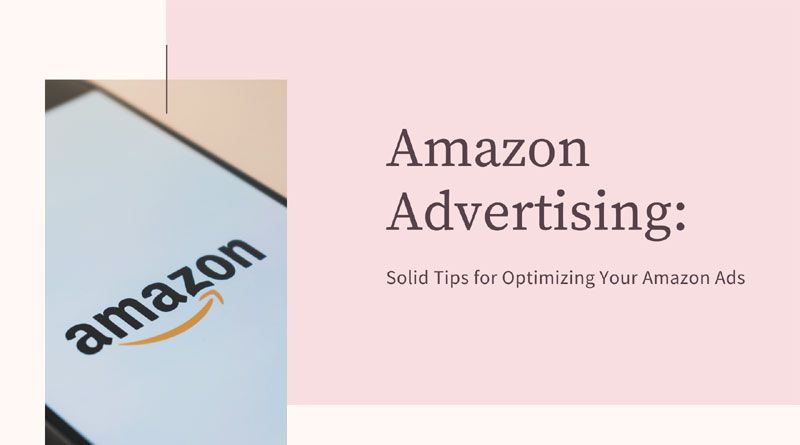Whether or not you are new to e-commerce and online selling, failing to optimize your ads on Amazon can lead to costly mistakes later on. After all, the largest online selling platform is the first place that people go to when they want to shop on the internet.
According to data by Statista, 197 million people worldwide shop on Amazon monthly. Also, in between 2015 to 2018, Amazon has outpaced Google as the top search destination for products.
With these numbers on the line, here are six solid tips for optimizing your Amazon ads:
Organize your campaigns
If you want to run campaigns that are cost-effective and successful, then having an organized campaign structure is vital.
When you run campaigns that are disorganized and messy, then you might be losing out money from clicks from unqualified ads that are retrieved by wrong keywords.
You might also end up spending more than you should from clicks. Or you’ll lose the money you invested.
Conduct keyword research
Your ads are less likely to appear on Amazon if it is irrelevant to a particular search query. This is where looking for and hiring one of the best Amazon marketing agencies in your area could come in handy.
They have the tools for conducting keyword research for your Amazon ads campaign. That’s because it is vital to find and use the right keywords for your campaign.
Initially, you might not get it right, but you’ll eventually know what works best for you over time with deliberate trial and error.
Keep in mind that incorporating keywords on your ads allows you to reach a more wide audience. That’s why you need to optimize your product listings with keywords that will be relevant to your target buyers’ queries.
It’s also better that you use long-tail keywords because you’ll less likely going to compete with other ads. Usually, this type of keyword conveys a particular intent where one of your ads can satisfy.
Refine product targeting via negative keywords
Negative keywords are just as crucial a popular keywords. If these keywords go unnoticed, then you might risk spending on underperforming terms. As a result, you’ll have low click-through rates and low conversions in the long run.
One of the primary goals of negative keywords is for you to get your products on search terms that are highly relevant to the products you’re advertising while avoiding spending your money on keywords that are generating clicks without converting.
Negative keywords also ensure that the different campaigns you’re running aren’t competing against each other.
So review the keywords that you’re using in your campaigns, make sure that they aren’t the same, and set negative keywords when necessary.
Run Product Display ads continuously
Amazon recommends that you run product display ads consistently. That’s because almost half of their shoppers in the United States make several purchases monthly.
Additionally, they also make 80 percent of those purchases at least once every month.
You can utilize Product Display Ads to convert customers, real-time, all year long automatically.
Leverage match types
If you’re already familiar with Google AdWords, then the whole concept of utilizing match types is already easy to understand.
Just like with AdWords, Amazon advertising utilizes broad, exact, and negative match types to be able to refine the targeting.
What’s important here is to utilize various combinations of these match type options. That way, everything’s ultra-targeted, and you can easily reach prospects that have a high buying intent. Moreover, you can also test out the different match types for your keywords.
As mentioned, Amazon lets you pick between broad, exact, and phrase matches. When you gather information on the search terms that are used by users, you can set the match type to “broad.” You can then place a significant amount of your budget on it for days.
Calculate ad cost over sales (ACOS)
Your Advertising Cost of Sales (ACOS) is essential when it comes to Amazon PPC. ACOS is the percentage of direct sales that you made from your Sponsored Product Ads.
It’s important because that will guide you in your advertising strategy. It’s also a measure of your success, helping you decide how you should bid on search terms.
The formula for computing ACOS is: ACOS = total ad spend / total ad sales x 100.
So if you spent $5 on advertising, and it resulted in $50 of sales, your ACOS would be 10%. When you know how to compute your ACOS for every keyword, it’ll be easier for you to come up with a list of keywords that have the lowest ACOS.
What you can do next is build a campaign that’s ultra-focused on these keywords with a bigger budget. These are considered as the optimal keywords for your product. You can also remove the keywords that have a poor ACOS ratio because chances are, they aren’t worth the effort.
You must review your keywords as well. That’s to ensure that your campaigns aren’t pitting against each other, significantly decreasing their returns.
An excellent solution to help solve the problem is to set negative keywords. Alternatively, you can also alter the keywords that are related to your ad campaign.
Optimizing your ads on Amazon eventually becomes much easier in the long run, as you gain more experience and gather more information on your specific industry.

Namaste UI collaborates closely with clients to develop tailored guest posting strategies that align with their unique goals and target audiences. Their commitment to delivering high-quality, niche-specific content ensures that each guest post not only meets but exceeds the expectations of both clients and the hosting platforms. Connect with us on social media for the latest updates on guest posting trends, outreach strategies, and digital marketing tips. For any types of guest posting services, contact us on info[at]namasteui.com.


Saved as a favorite, I love your website!